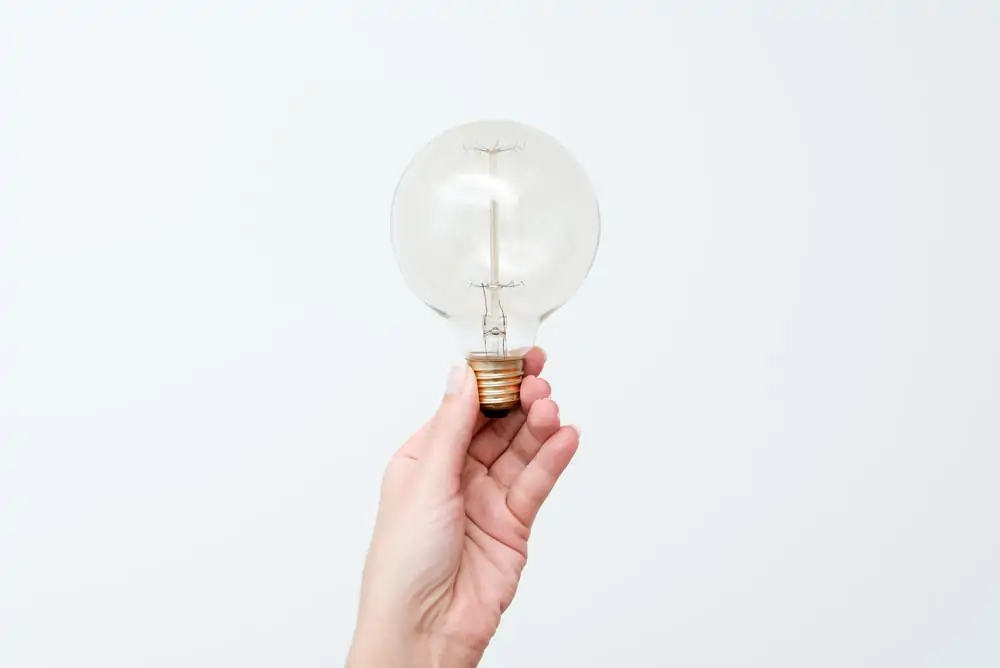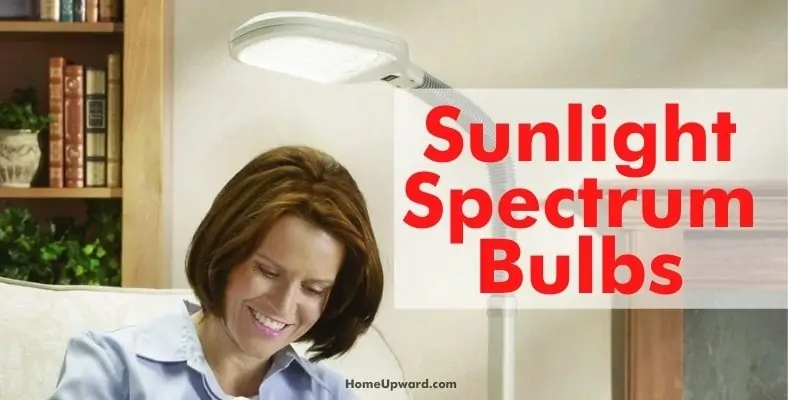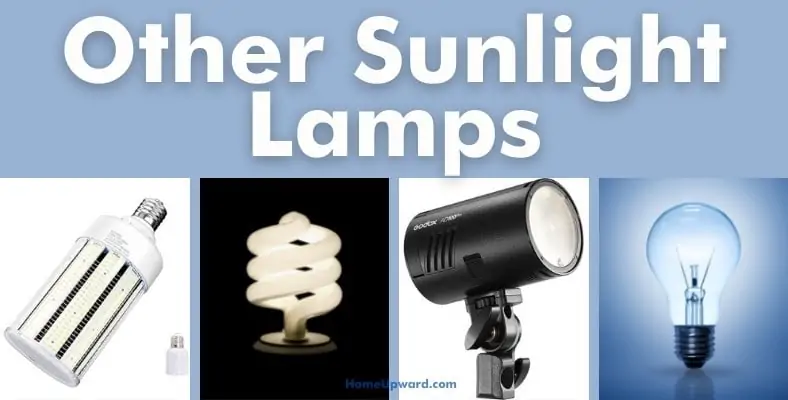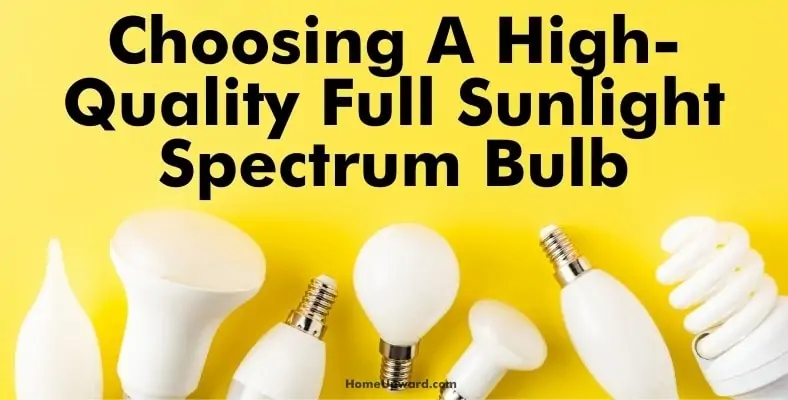While quality lighting and light bulbs can help us (more or less) stay relatively healthy in a variety of ways, sunlight is very important.
Are there bulbs that can duplicate what sunlight can do? Read on to learn more.
Contents
Why is sunlight so important?
Natural light provides us with Vitamin D. Having enough of this vitamin is vital for many reasons. These include keeping your bones and teeth healthy, limiting the chance of getting diabetes, and it can also protect you against cancer or multiple sclerosis.
As well as being a beacon of Vitamin D, natural light can also help ward off seasonal depression and can help improve sleep patterns.
The more natural light you’re exposed to, the more productive and creative you may be. Research has found that artificial natural daylight can promote your productivity if you work in a room with no access to natural lighting or prefer to work through the nighttime.
These days, most of us spend a lot of time indoors. Be this at work or home, we may not be getting enough natural light that our bodies need.
However, it has been found that exposure to bright light from natural light bulbs can help those who regularly stay indoors and these bulbs can make up for the natural light they miss out on.
Sunlight spectrum bulbs
Although sunlight is by far the best source of natural light, other options can help. One is full sunlight spectrum bulbs. These are designed to emit light that corresponds to the visible segment of the solar spectrum.
These lights produce infrared light and ultraviolet light to reproduce more accurate light from the spectrum.
However, no lamp or bulb can reproduce the sunlight spectrum accurately. The same goes for the continuous wavelength spectrum and the intensity of each wavelength.
Artificial light bulbs can simply resemble the natural balanced light which can produce the same beneficial effects for us – just don’t expect them to be truly the same as real sunlight.
Other sunlight lamps
While full sunlight spectrum bulbs may not reproduce the exact sunlight spectrum, other commercial options closely resemble this spectrum to an adequate degree.
Incandescent light bulbs provide a smooth and continuous spectrum. Nonetheless, a 100-watt incandescent bulb will only have a color temperature of 2850K. A high percentage of this will include a red and yellow color.
These bulbs that are coated with neodymium are sold as sunshine lamps even though their color temperature is much less than the limit that is 5000K. It is important to remember, however, that the visual spectrum of the human eye can not fit the solar spectrum.
Therefore, these lamps can be very beneficial to our health even though they do not match real sunlight.
What else can you look for?
A more versatile choice would be a compact fluorescent lamp or CFL. There are a variety of these bulbs available with different temperatures that can reach 5000K and 6000K. These bulbs emit continuous spectra mixed with discrete spikes/lines.
There is a mixture of phosphors inside the tube of these bulbs which emits a distinct color. With the addition of extra phosphors, the CRI (color rendering index) of the bulb is increased.
LEDs are another option when trying to mimic natural sunlight. However, these must be used through a device known as a LED solar simulator. While LED technology is very exciting, this isn’t readily available on the market just yet.
Further lights that can slightly make up for natural light are mercury-vapor lamps and high-intensity discharge (HID). These provide a good color temperature but they seem to have a fractured light spectrum which isn’t quite as promising as other options.
The benefits of using sunlight lamps
While sunlight bulbs are readily available on the market, many wonder if they are actually needed. Although we recommend getting natural sunlight as much as possible, this may not always be possible. Therefore, these bulbs and lamps are the next best alternative.
Full spectrum lighting has a wide range of benefits according to the manufacturers and those who have used this technology. These benefits usually depend on the quality of the light and the matching degree to the full solar spectrum. Some benefits include:
- Helping people who suffer from SAD (Seasonal Affective Disorder). This is a type of depression experienced during particular months of the year. Most sufferers find that overcast days or those with low-intensity light are significantly depressive. This is treated with light therapy as it can help sufferers feel more energetic and active. Sunlight lamps are thought to help with this condition and are a Godsend for people during the long, dark winter months.
- Full spectrum lights are believed to be extremely effective and beneficial in workspaces such as offices or other enclosed areas. It has been found to increase people’s productivity during an array of work tasks. This links in with the upturn in energy that SAD sufferers experience when using these lights.
- This lighting has also been found to reduce headaches, eyestrain, and stress. This has been especially evident during studying or long hours reading a book or computer screen.
Choosing a high-quality full sunlight spectrum bulb
It is important to note that the quality of these bulbs generally depends on the manufacturer. When these bulbs are designed, the engineer and/or consumer should pay close attention to the spectrum graph of the bulb.
This spectrum has to be continuous with no discontinuities or movements on the line of the spectrum graph. Additionally, these lamps can only be safe for commercial use if the infrared and ultraviolet wavelengths they emit are blocked by protective filters.
Inexpensive cool white bulbs are extremely popular but have low values of CRI and a low color temperature. Therefore, these are not the truest form of full-spectrum light bulbs and can cause eye strain over time.
For a table lamp that reduces eye strain and produces close to natural light, consider a model like the TaoTronics LED Desk Lamp. This will provide adequate lighting for your environment thanks to its five color models that ensure it mimics natural daylight colors.
You can also adjust the bulb to suit your desired level for a healthier light spectrum.





